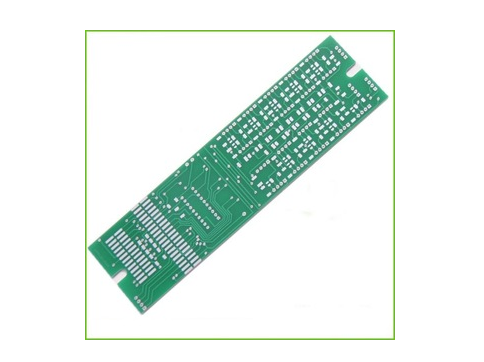The processing of power supply plane plays an important role in PCB design. In a complete design project, the treatment of power supply can usually determine the success rate of 30% to 50% of the project. This time, WE introduce the basic elements that should be considered in the process of PCB design.
1. Do power processing, the first thing to consider is its current-carrying capacity, which contains two aspects.
(a) Whether the width of the power cord or the width of the copper skin is sufficient. To consider the width of power line, first of all, it is necessary to know the copper thickness of the layer where the signal processing of power supply is located. In conventional process, the copper thickness of the outer layer (TOP/BOTTOM layer) of PCB is 1OZ (35um), and the copper thickness of the inner layer can be 1OZ or 0.5oz according to the actual situation. For 1OZ copper thickness, 20mil can carry about 1A current under normal conditions; 0.5OZ copper thick, under normal conditions, 40mil can carry about 1A current size.
(b) Whether the size and number of holes during layering meet the current capacity of the power supply. First of all, it is necessary to know the flow capacity of a single through hole. Under normal circumstances, the temperature rises to 10 degrees, which can be referred to the following table.

Cross-hole Aperture and Power Supply cross-current capability Table Cross-hole aperture and power supply cross-current capability table
As can be seen from the above table, a single 10mil hole can carry the current of 1A. Therefore, in the design, if the power supply is 2A current, at least two holes should be drilled when the 10mil hole is used for layer change. In general, when designing, we will consider making more holes in the power channel to keep a little margin.
2. The power supply path should be considered. Specifically, the following two aspects should be considered.
(a) The power supply path should be as short as possible. If the path is too long, the power supply voltage drop will be serious, which will lead to the failure of the project.
(b) Power plane segmentation should be as regular as possible, and slender strip and dumbbell-shaped segmentation are not allowed.
(c) During power division, the separation distance between the power supply and the power plane should be kept at about 20mil as far as possible. If the separation distance between the power plane and the power plane is too close, there may be the risk of short circuit.
(d) If the power supply is processed in adjacent planes, avoid copper skin or parallel wiring. Mainly in order to reduce the interference between different power supplies, especially between some power supplies with very different voltages, the overlapping problem of power supply planes must be tried to avoid, when it is difficult to avoid can be considered in the interval stratum.
3. When dividing the power supply, the adjacent signal lines should be avoided as far as possible. When the signal is divided across (the red signal line is divided across as shown below), there will be impedance mutation due to the discontinuity of the reference plane, resulting in EMI and crosstalk problems.